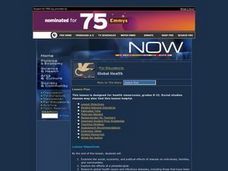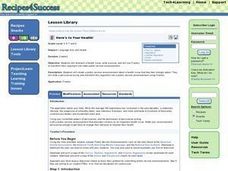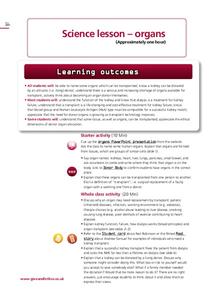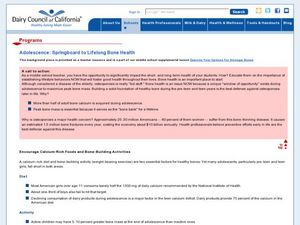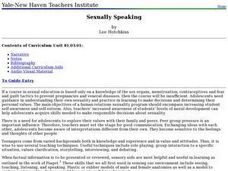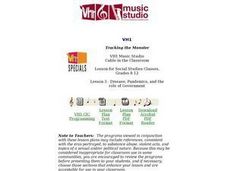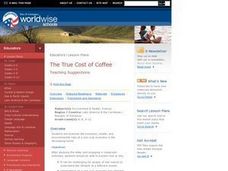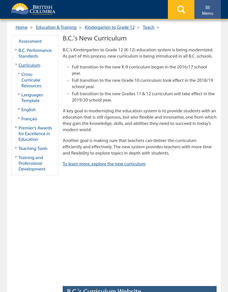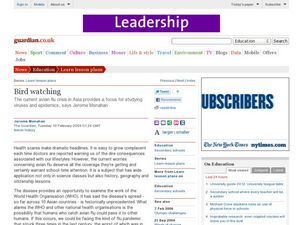Curated OER
Then and Now: Public Health from 1900 to Today
Throughout the 20th Century, the world has become a healthier place. By examining the public-health issues and diseases doctors faced during the 1900's, students will compare and contrast life from today vs. life in the 1900's. Their...
Curated OER
Here's To Your Healthy Heart!
Students examine the primary controllable and uncontrollable factors that put one at greater risk for developing heart disease. Through discussion, research, physical tests, and questionnaires they determine whether or not they are at...
National First Ladies' Library
Heart Health: Awareness and Research for Women
Students explore basic heart anatomy, review basic definition of heart disease, research different tests used to diagnose heart disease and heart attacks, discuss what constitutes a "healthy heart" lifestyle, and incorporate it into...
Curated OER
Global Health Issues
Examine global health issues and the philanthropic efforts of Bill Gates. Working in groups, your class will research selected diseases focusing on symptoms, transmission, and prevention. They also conclude by writing grant proposals to...
Curated OER
Heart 2: Changing Lifestyles and Heart Health
Students examine and evaluate changes in diet and lifestyle from prehistoric to modern times and how these differences have spurred the development (and better treatment) of heart disease.
Curated OER
Personal Health Series: Fitness
Complete activities to help your class appreciate the importance of physical activity. They will answer discussion questions, read articles, and create their own physically active game in order to deepen their knowledge and appreciation...
Curated OER
Social Studies: Dating Behaviors
Upper graders discuss the importance of responsible dating. In addition to a discussion period, the lesson includes Powerpoint presentations, poster designs, and related role-playing activities. In one scenario, students act as parents...
Curated OER
Health and Nutrition
Students examine vocabulary words that deal with the parts of the body. They identify the body parts and organs associated with the five senses. They identify common illnesses, causes and treatments. They research various lifestyle...
Curated OER
Here's to Your Health!
Studets research a health issue. They write an essay about the health issue. The create a public service announcement.
Curated OER
Fast Fats: A Nutritional Analysis of America's Obsession with Fast Foods
How do you read a nutritional label? Help high schoolers practice reading nutritional labels on foods so they can calculate the calories in different types of foods. They will also examine the effects of fat on the body and the link to...
Nemours KidsHealth
Drugs: Grades 9-12
What do drugs do to the body and to the mind? What are the dangers of using drugs? How can teens respond to the pressure to use drugs? After reading a series of articles related to drug use and abuse, class members prepare a skit to...
Give and Let Live
Blood and Transplant: Organs
Who donates organs, and how do organ donations work? The third lesson in a four-part series discusses the tremendous need for donor organs of all ages and backgrounds. A variety of materials, included with the teacher's guide, walk...
Curated OER
Adolescence: Springboard to Lifelong Bone Health
Students discuss bone health. In this health lesson, students talk about foods and activities that can foster strong bones. Students explore ways to defeat obstacles to bone health.
Curated OER
Sexually Speaking
Students engage in activities designed to increase self esteem, self awareness and human sexuality. They engage in a variety of activities to encourage active participation, introspection, stating and examining values, gaining factual...
Centers for Disease Control and Prevention
Diabetes in the Family: A Case Study
Students examine a case study of a woman with a family history of type 2 diabetes and create a "family health portrait" that assesses her risk of developing diabetes. They use the family health portrait to record the woman's family...
Curated OER
Disease, Pandemics, and the Role of Government
Pupils compare and contrast the global efforts being made to stem a possible avian flu pandemic to the global efforts made to counter the current HIV/AIDS pandemic.
Curated OER
"Asthma: Stopping Attacks Before They Start"
Young scholars study facts about living with asthma. They examine medical treatments and lifestyle changes that can improve the life of asthmatics. They determine the cause and effect relationship.
Curated OER
The True Cost of Coffee
Students examine the economic, health and environmental risks of being a one-crop country. They explain the risks of relying on one crop. They also identify the factors that resist change.
Curated OER
Cows in Crisis
Students study mad cow disease and how it has affected the lifestyles of many Europeans. They examine local cattle industry and look for steer- or cow-related products. They organize information they find and present it to the rest of...
Curated OER
Grade 9 - Personal Development (Healthy Living)
Ninth graders analyze lifestyle factors that affect health and demonstrate an awareness of key lifestyle practices associated with prevention of disease.
Curated OER
Bird Watching
Young scholars explore the implications of the avian flu. For this personal health lesson, students listen to a lecture about the avian flu, its history, and how it spreads.
Nemours KidsHealth
Fitness: Grades 3-5
Little athletes put their minds and bodies to work to invent new fitness games for class! Using information they gather from informational texts, youngsters design games that include motor skills, materials, rules, and...
National Center for Case Study Teaching in Science
A Healthy Retirement?
Do men and women experience heart disease the same way? High school and college-level biologists examine a case study about a woman, Nancy, who is experiencing intermittent health issues; looking at her diet, exercise, and lifestyle...
Curated OER
Changing unhealthy eating habits
Learners identify the elements of a balanced diet, then compile a daily diet and exercise log to assess their lifestyles and improve them if applicable. They recognize and explain the importance of proper nutrition practices.



